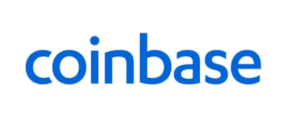Best Ethereum Staking Platform UK 2021 – Get Top ETH Rewards
Cryptocurrency staking has grown in popularity amid the rise in proof-of-stake blockchains. The concept of staking involves crypto holders who keep their tokens on a platform to serve as a validator of the network in exchange for rewards. Ethereum staking provides investors with a mid to long-term investment option. Investors can earn an annual percentage yield (APY) of 5.3% when staking Ethereum.
This guide highlights some of the best Ethereum staking platforms and how you can generate returns from ETH staking.
Best Ethereum Staking Platforms 2021 List
- Coinbase – Best user-friendly ETH staking platform
- Kraken – Top Ethereum staking destination for much of Europe
- KuCoin – Popular ETH Staking Exchange
- Binance – World’s Largest Crypto Exchange and Staking Platform
Best Ethereum Staking Platforms Reviewed
Ethereum staking is highly popular given the network’s crucial role in the DeFi sub-sector. At the moment of writing, over 3,000 high-brew dApps are resident on the Ethereum network. Given its vital role in the new face of financial services, Ethereum staking has spiked despite the network not operating fully on a PoS model. Ethereum staking currently ranks third on the list of the most staked tokens, according to Staking Rewards. ETH staking rewards stand at 5.38%, and so far, over $26.4 billion of ETH have been locked up as the network transitions to the PoS consensus algorithm.
Meanwhile, several platforms now offer support for Ethereum 2.0 staking but making a decision can be difficult. Of the five exchanges listed above, we would thoroughly review two cryptocurrency platforms where you can stake Ethereum.
1. Coinbase – User-friendly Staking Platform
The top US crypto exchange Coinbase offers staking-as-a-service (SaaS) for users.
You can stake your idle tokens among a varied number of digital assets on the Coinbase platform. You can stake ALGO, ETH, XTZ, ATOM, USDC, and Maker DAI.
Ethereum staking reward is pegged at 5%, the highest on the platform, but this comes with a hefty 25% commission fee which can significantly impact your staking returns. ETH staking is offered in specific regions only. Coinbase plans to add more jurisdictions to its crypto staking services in the future.
- User-friendly and intuitive staking platform
- Automatic and periodic payments
- Low minimum deposit.
- Larger repository of assets to stake
- High staking fees
What is Ethereum Staking?
Crypto staking involves locking up or pledging a network’s asset to help the network validate transactions better. When you freeze your Ether, the stakes are passed on to miners (nodes) who use them to participate as validators in the network.
Under proof-of-stake blockchains, miners are assigned blocks to be recorded on the blockchain-based on the amount of Ether they hold. The miners get a reward for this activity, which is then passed on to the user who lent his tokens. Token rewards and the knowledge that you’re helping secure the blockchain are two major rewards for users who stake their Ether. The downside? Well, you won’t have access to the funds once it’s locked up. You’ll have to wait for the expiration period.
How Does Ethereum Staking Work?
There are two methods to staking Ethereum. There is the soft-staking and the hard staking. Under the soft-staking method, the user has to freeze his Ether by using a platform that enables such transactions without going through too much effort. The second option, hard staking, involves a total freeze on the user’s assets. During the locked-in period, the user won’t be able to sell its cryptocurrencies. There are also instances where the user receives the staking rewards daily or monthly. Another option is for the user to receive his rewards once the staking period ends.
Is Staking Ethereum Safe?
Staking, in itself, carries along with it a certain level of risk and in the crypto industry, this risk is even more pungent. Your investment may erode in the following two instances:
- The value of your staked token declines significantly with the fees generated not being able to cover your initial investment
- The blockchain becomes less popular with time and generates fewer fees leading to fewer returns
These are the primary risks involved in staking Ethereum. Here are the reasons why the Ethereum network remains solid despite the emergence of Cardano and Polkadot:
-
Ethereum Is the Most Recognized Dapps Platform In the World
The Ethereum blockchain was created in 2015 to bring about a new financial landscape, and the network has been largely successful in its attempt. This has seen the Ethereum blockchain become the most recognised dApps brand globally, and it currently plays host to over 3,000 top-ranking dApps platforms in the world.
-
Ethereum Is At the Forefront of Next-Gen Financial Services
DeFi boomed in early 2020 with one of the most successful DeFi protocol Yearn.Finance launching on Ethereum. Ever since then, DeFi-facing protocols have grown with over $91 billion total value locked (TVL) currently circulating in the sub-sector. Top DeFi brands like Aave and Compound Finance operate on the Ethereum network, leveraging the older blockchain’s security to allow users to lend, borrow, and earn. Aside from DeFi, non-fungible tokens (NFTs) have also boomed, and Ethereum features significantly in its success. NFT blockchains like Axie Infinity have grown in popularity, with the global NFT figure standing well over $14.27 billion.
-
Ethereum Staking Is One Of the Most Staked Tokens
Ethereum staking is becoming increasingly popular by the day as the network transitions to a PoS protocol. At the moment, Ethereum 2.0 is the third most staked PoS protocol behind the Cardano and Solana network. This makes it a top avenue for crypto investors looking for passive income.
How Long Does it Take To Earn ETH Staking Rewards?
ETH staking rewards kick in according to the determined periods. Platforms like Kraken require a 20 days bonding period before users begin earning rewards.
Benefits of Staking Ethereum
Staking Ethereum has been picking up steam as the development team continues to roll out major upgrades. These are:
-
ETH 2.0 Will Become More Scalable
A number of issues bogs down the current consensus algorithm Ethereum uses. These range from speed, efficiency, security, and scalability. The PoW protocol is inherently secure but slow and expensive. The migration to PoS will enable the Ethereum network to operate in parallel chains, thereby increasing transaction speed, security, and efficiency. This will have the knock-on effect of slashing the gas fees as the blockchain will better handle higher volumes of trades.
-
ETH 2.0 Will Be Environmentally Friendly
One of the major criticism of the PoW algorithm has been its energy heat map. The protocol requires miners to compete for block rewards through solving complex mathematical puzzles. The first to the mark gets the reward while the rest get nothing in return. To increase efficiency and chances of picking block rewards, miners use gas-guzzling supercomputers like an application-specific integrated circuit (ASIC) which has the same energy landmark as entire countries. PoS will eliminate the need for this intense and wasteful competition as only selected validators will verify transactions on the network. This will substantially cut down on the network’s energy demands and attract more ESG-minded investors.
-
Ethereum Staking Is An Income Stream
Staking Ethereum is a major financial coup given the rewards and can serve as a savings plan. Earning newly minted coins without any exertion can be a great way to diversify your investment.
Ether’s 1000% gain year-to-date (YTD) shows the network is still expected to surge in value once the transition is complete. Holding a first-mover advantage (FMA) puts the Ethereum blockchain at the forefront of an entirely novel financial landscape.
Pros & Cons of Staking ETH
- Earning passive income
- Improved network security
- Higher scalability
- Losing Ether due to Slashing
- Staking leads to increased supply, which is inflationary
Conclusion
Staking Ethereum is becoming increasingly popular by the day and it can become a great way to generate passive income on your investment while holding.



